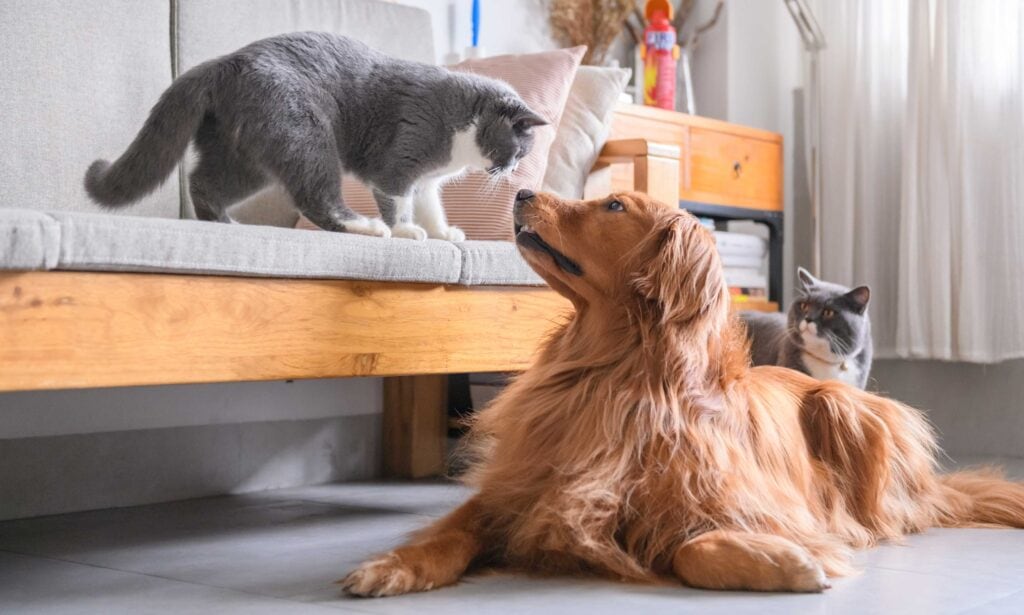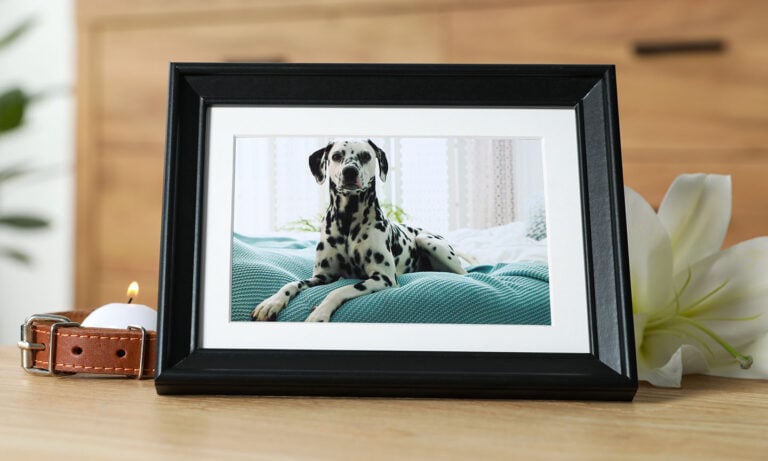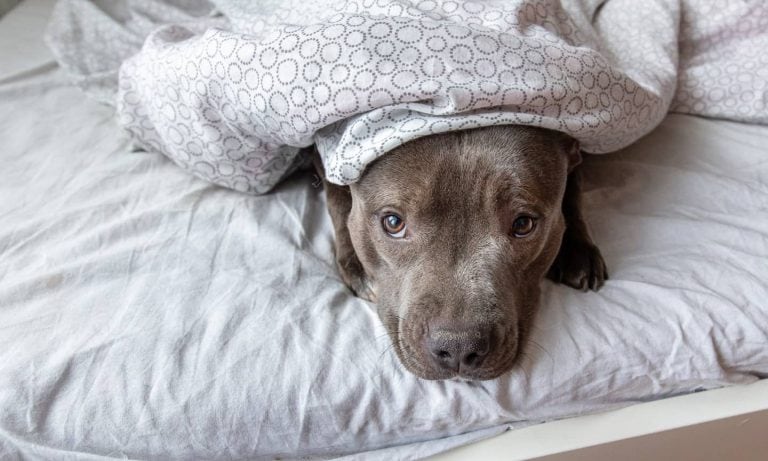Our pets will always be our babies. But unfortunately, aging is a fact of life, even for our four-legged companions. And with age comes age-related diseases, such as osteoarthritis, changes in weight and other health issues. As a pet parent, the best thing you can do is be proactive and learn how to make your dog live longer or how to help your cat enjoy a longer and more fulfilling life.
The sooner you get started, the better. Cats hit their prime adult years between ages 3 and 6, with their senior years beginning around age 11. Dogs age differently depending on their breed, with larger dog breeds aging quicker than smaller dog breeds. In general, larger dog breeds are considered senior as early as 6-7 years old, while medium dog breeds are considered senior around 8-9 years old and small dogs a couple of years after that.
“To be safe, it’s best to start doing physical and mental exercises with your pet starting when they are about 3 or 4 years old, and sooner is fine, too,” says Irith Bloom, CPDT-KSA, CDBC, who owns The Sophisticated Dog training company in Los Angeles, California.
In addition to physical and mental exercises, providing your pet with a healthy diet, proper dental care and vitamins and supplements can help make your dog or cat live longer and keep them feeling youthful well into their golden years.
1Get Those Bodies Moving

Photo: Chewy Studios
Newton's first law of motion teaches us that an object in motion stays in motion. The same could be said for aging dogs and cats. If you keep your pet moving through play and other forms of exercise, your dog or cat will likely continue to stay active and mobile.
“A pet who is fit and feels good moving around tends to be more active, which helps the pet stay fit and healthy longer,” Bloom says.
This is particularly important for older pets, who lose muscle mass as they age just like humans do.
“Proper exercise helps keep their muscles in better condition and improves flexibility as well as strength,” Bloom says. “This translates into better mobility as the pet ages. It also helps prevent injuries that can otherwise happen due to muscle weakness and lack of flexibility.”
Regular exercise has many other benefits. In addition to keeping muscles tone and improving flexibly, Dr. Sarah Wooten, DVM, a veterinarian at Sheep Draw Veterinary Hospital in Greeley, Colorado, says exercise can help stave off unhealthy weight gain, keep brains sharp, maintain healthy metabolism, reduce the likelihood of behavioral issues associated with boredom or stress, reduce anxiety and promote better sleep.
“Unless your pet is recovering from an illness or injury or has a medical condition that prohibits exercise, daily exercise is important for physical, mental and emotional health,” she says.
Consult with your veterinarian to determine how much and which type of exercise would best suit your pet. In general, Bloom says that older dogs and cats do not need as vigorous as exercise as their younger counterparts. Instead of exercise that involves fast, sudden movements, Bloom recommends balance, stretching and strengthening exercises.
“These can be as simple as [using a treat to] lure your dog’s nose over to his shoulder to stretch his neck,” she says.
You can do the same exercise with cats, although Bloom notes that they may not be as food motivated as a dog. In which case, she suggests contacting a certified pet physical therapist or fitness trainer to come up with a routine that is safe and productive.
2Keep the Mind Sharp
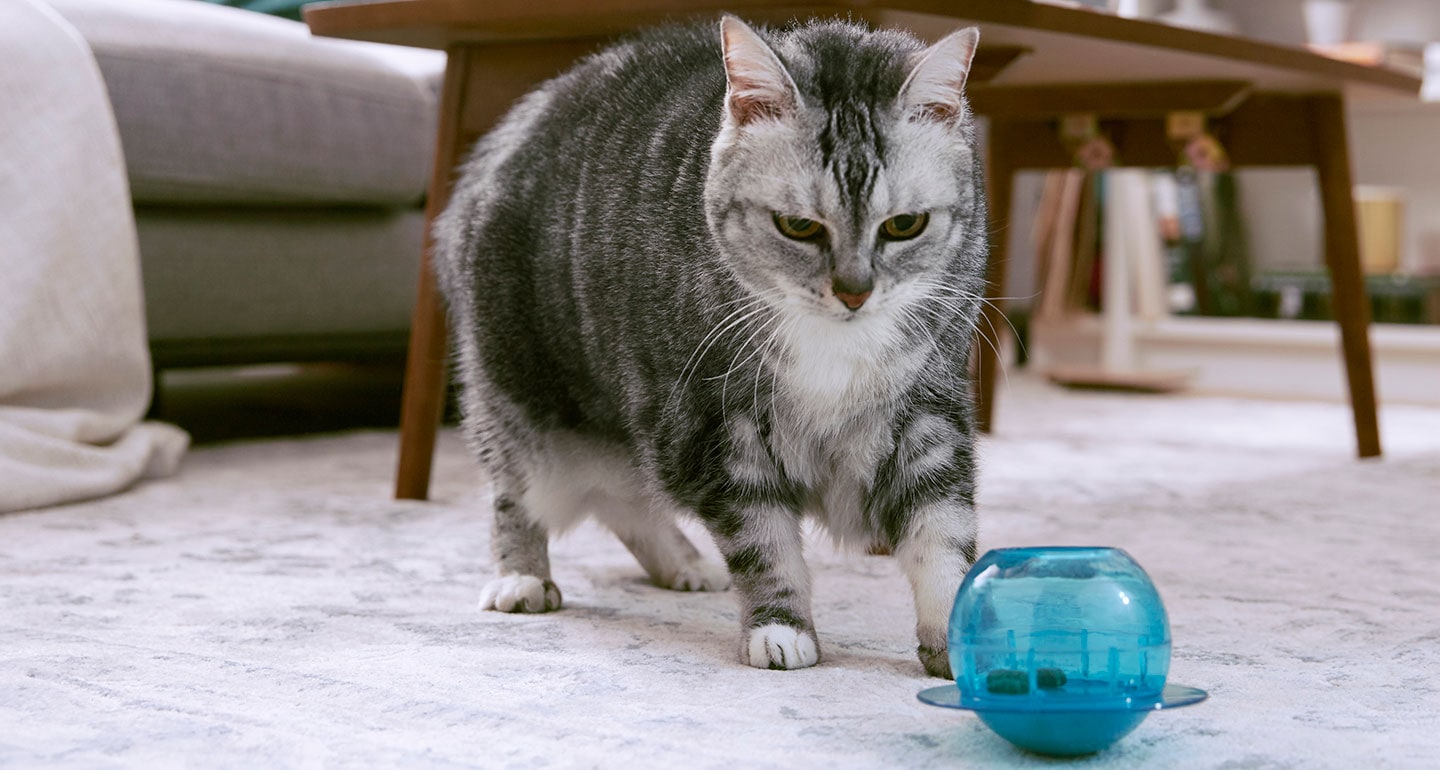
Photo: Chewy Studios
Mental exercise is just as important as physical exercise in helping aging dogs and cats stay fit and youthful.
“For one thing, it helps prevent the boredom that can result from lower physical activity levels,” Bloom says. “For another, just as with humans, keeping your pet’s brain active helps your pet’s brain stay healthier.
So, how exactly do you exercise your pet’s brain? Teach them new tricks and provide them with other mentally-engaging activities, like games and puzzle toys.
“Your pet may not be interested in taking up a card game such as bridge in his senior years, but everything from simple obedience exercises to playing with puzzle toys can help your pet’s brain stay sharp, and stave off cognitive decline,” Bloom says.
She recommends short bursts of mental stimulation multiple times a day. For example, she says you could do five minutes of obedience training with your dog in the morning and then serve him his breakfast in a puzzle feeder, like the Outward Hound fun feeder, so that he has to mentally work for his food.
“[Then,] in the middle of the day, you could take a 30-minute walk with lots of time to stop and sniff,” Bloom continues. “Round things out with another short obedience training session in the evening, a food puzzle toy for dinner, and another sniffy walk before bedtime.”
For cats, Bloom recommends four or more short play sessions, about 15-20 minutes each, throughout the day, using different toys and movements to keep the cat engaged. She also suggests using puzzle toys or food dispensing toys during meal times, and hiding small treats around the to get your cat to hunt for her food.
“Since cats are so agile, you can hide the treats on shelves or even in drawers,” she says. “Cats also tend to enjoy playing with things like boxes and tissue paper, so feel free to add those into the routine, too!”
3Brush Those Pearly Whites
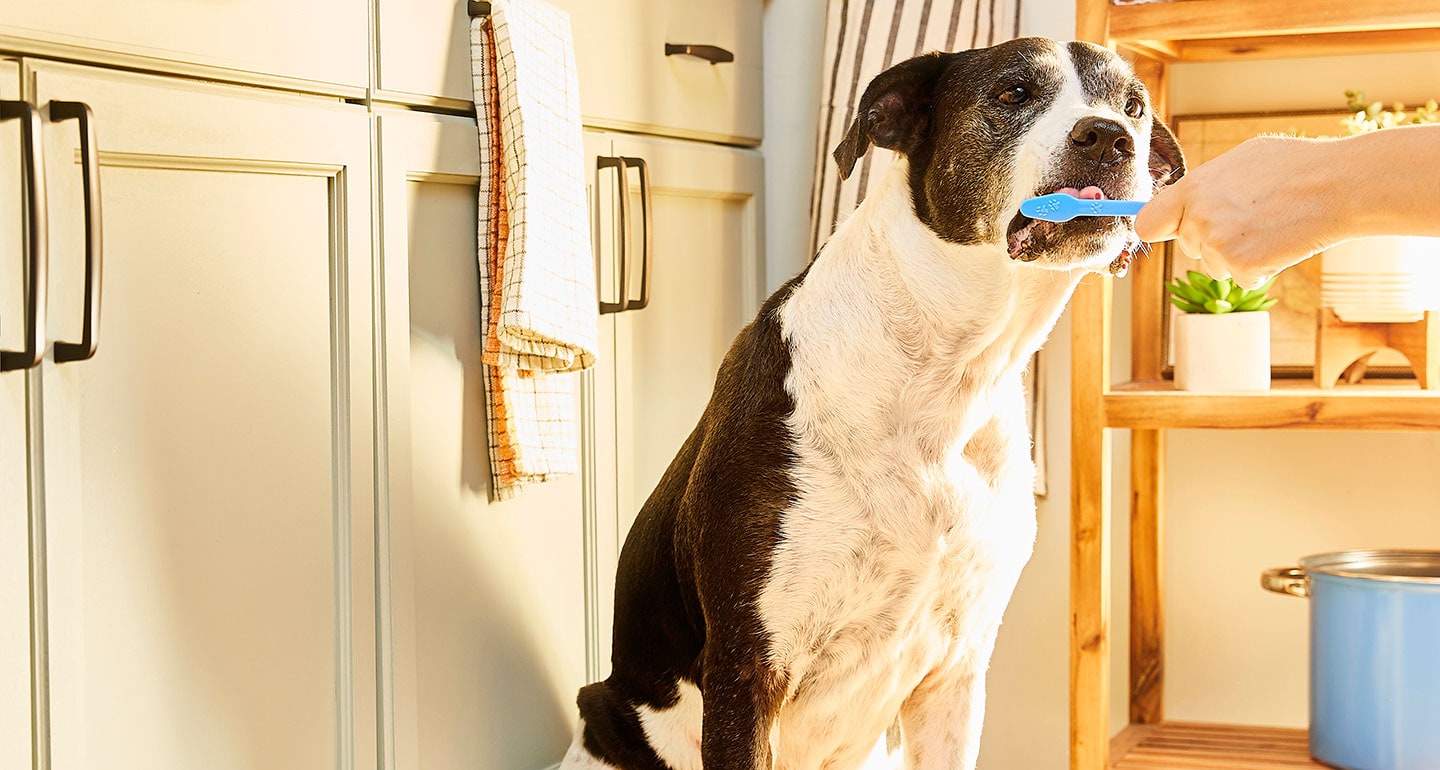
Photo: Chewy Studios
Have you ever needed serious dental work? It’s often an unpleasant experience and the pain can be excruciating. You don’t like it, and your pets sure don’t.
Aging dogs and cats are more prone to dental disease. The American Veterinary Dental College estimates that by age 3, most dogs and cats have some evidence of periodontal disease, which includes gingivitis and periodontitis (loss of bone and soft tissue around the teeth).
Dr. Wooten urges pet parents to stay on top of regular dental care, including brushing your pet’s teeth. Lots of brands sell kits that have everything you need to brush your dog or cat's teeth. For example, Arm & Hammer's Clinical Gum Health dental kit for dogs comes with chicken-flavored toothpaste, a dual-sided toothbrush for hard to reach places and a little finger brush that massages the gums. Not sure how to actually go about brushing your pet's teeth? Get tips for brushing your dog’s teeth here and tips for brushing your cat’s teeth here.
“I cannot overemphasize the importance of daily tooth brushing,” Dr. Wooten says.
She also recommends giving pets dental treats and chews to reduce plaque build-up.
In addition to at-home care, Dr. Wooten says to stay on top of professional dental cleanings. During your annual vet visit, your veterinarian should be able to tell you whether your pet needs a dental cleaning. A dental cleaning entails scaling and polishing the teeth, much like a trip to the dentist for yourself. Other procedures might be necessary depending on the health of your pet’s mouth.
“If dental disease is present, pony up and pay for dental work, and then be diligent about brushing at home,” Dr. Wooten says.
4Step Up Your Grooming Game
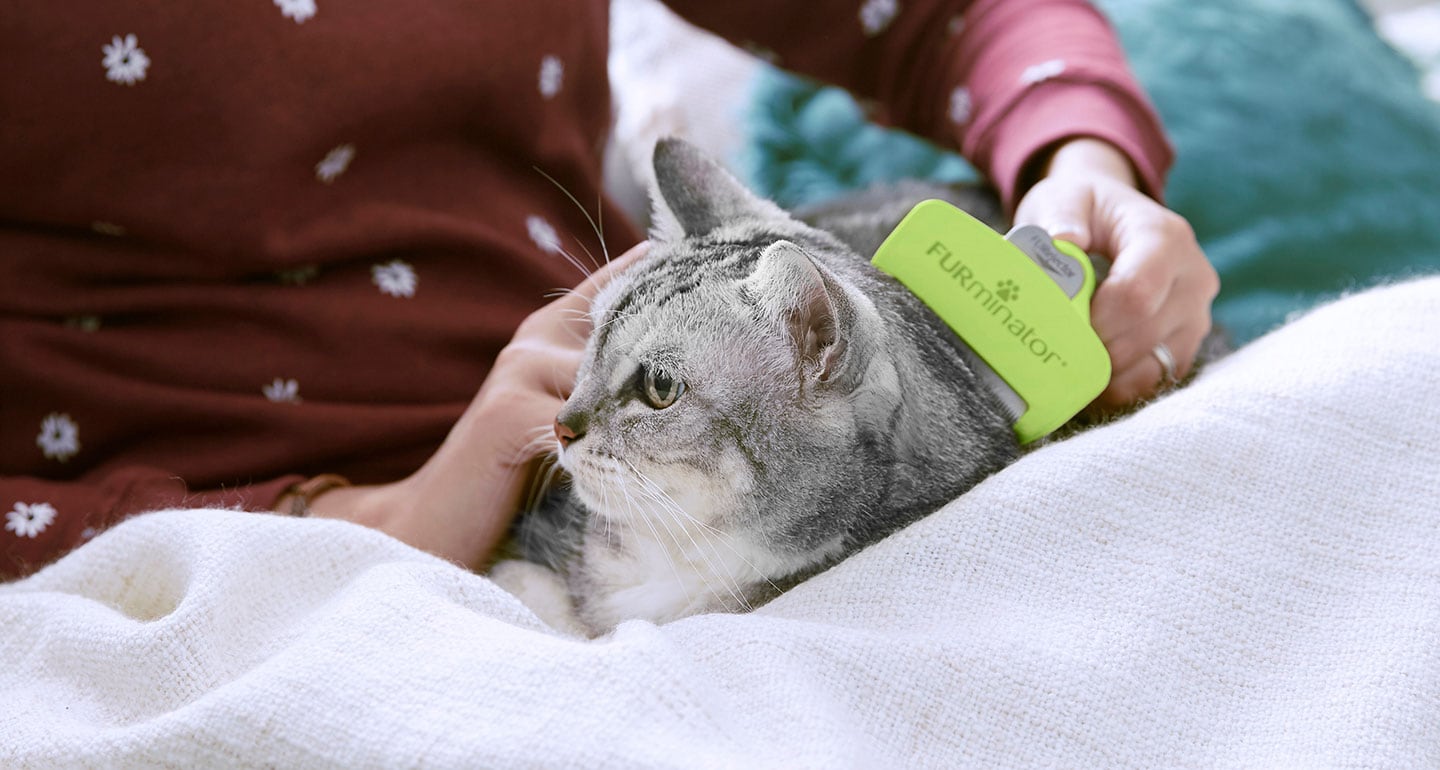
Photo: Chewy Studios
Help your pet look and feel their best by providing regular grooming sessions. Aging dogs and cats may need more frequent grooming sessions the older they get, says Barbara Bird, certified master groomer and owner of Transformation Pet Center, a pet grooming business in Tucson, Arizona.
Cats, for example, may not be able to keep up with their regular self-grooming schedule if they’ve developed arthritis. That means you’ll need to step in and help your kitty stay fresh and clean.
“In other instances, cat and dog fur can change in texture and quality and become matted,” Bird says.
She recommends monthly grooming sessions, which not only help keep your pet looking their best, but also provide opportunities to evaluate your pet’s overall health. For example, while a certain amount of thinning hair is to be expected, Bird says excess thinning and dry brittle hair can be signs of underlying health issues, like Cushing’s disease.
“The visual and tactile inspection that accompanies grooming is valuable to elderly pets, as it allows for early detection of abnormal growths or problems inside the fur that might not be noticeable to the casual eye,” Bird says.
Regular grooming sessions can provide emotional benefits as well.
“For some advanced-age dogs that have hearing and sight loss, the touch of grooming can be an important connection that helps them stay tuned in,” she says. “The grooming itself helps the senior dog feel cared for. Whether the grooming happens at home or at a salon, the grooming routine is recognized by the pet and that gives them reassurance.”
If bath is a four-letter word in your house, you can sometimes skip the water and opt for dry shampoo for pets instead.
“Dry shampoo options are growing,” Bird says. “They are crossing over from the human hair care marketplace where they are a rapidly growing product sector.”
One dry shampoo option is FURminator Fresh & Clean Scented Dry Dog Shampoo. You shake, spray, wait for it to dry and then work it into your dog's coat with your fingers or a brush.
Another option is “waterless shampoo,” which Bird describes as highly diluted surfactant solutions that are safe to use without rinsing. For example, Ark Naturals' "Don't Worry... Don't Rinse Me!" is a foam you rub into your cat or dog's fur and that's it. Brushing or towel drying is optional.
Birds says these waterless shampoos come in handy when cleaning up urine and feces from your pet. These “back door” cleanups, as groomers call them, might become more regular if your elderly pet has incontinence issues.
“Serious incontinence may require equally serious trimming or clipper work around the back door,” Bird adds.
She also recommends keeping a foaming face cleaner on hand for cleaning your pet’s face and rear end. Pet wipes can also help.
5Provide Supplemental Support
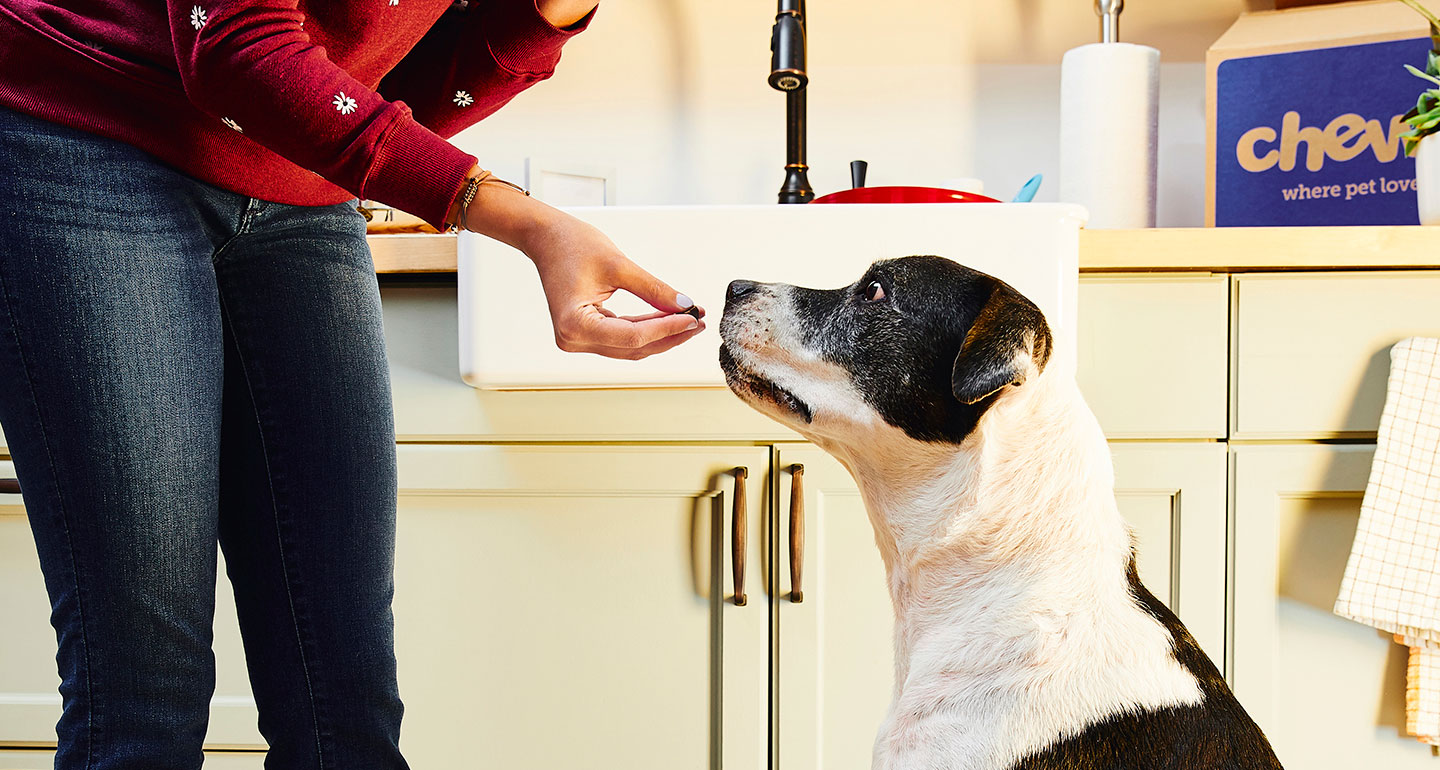
Photo: Chewy Studios
As your pet ages, you might notice that they’re not as active as they once were. But don’t assume it’s because they don’t have the energy or desire to be active. Pain from joint disease, like arthritis, might be playing a part.
“The number one cause of loss of playfulness in pets is joint disease,” Dr. Wooten says.
A high-quality joint supplement may help promote joint health and reduce inflammation that leads to pain. Dr. Wooten recommends Cosequin brand joint health supplements.
Aging dogs and cats might also benefit from omega-3 fatty acid supplements, like fish oil, which may help reduce inflammation.
“Many pet diets are deficient in omega-3 fatty acids,” Dr. Wooten says. “Supplementing omega-3 fatty acids can help a pet look and feel younger and healthier.”
She recommends Nordic Naturals’ fish oil supplements for pets, like Nordic Naturals Omega-3 soft gels for dogs, which contains wild anchovy and sardine oil to support healthy skin and coat, joint function and heart function.
Some older pets might benefit from a multivitamin if their nutritional needs are not being met by their regular diet.
“Sometimes, the digestive system doesn't digest and absorb nutrients as well as the gut system of a younger animal,” Dr. Wooten says. “Giving a multivitamin supplement can help fill in these gaps.”
Other supplements, such as CBD oil, can help reduce anxiety and promote overall well-being, she adds.
6Serve Up a Healthy Diet
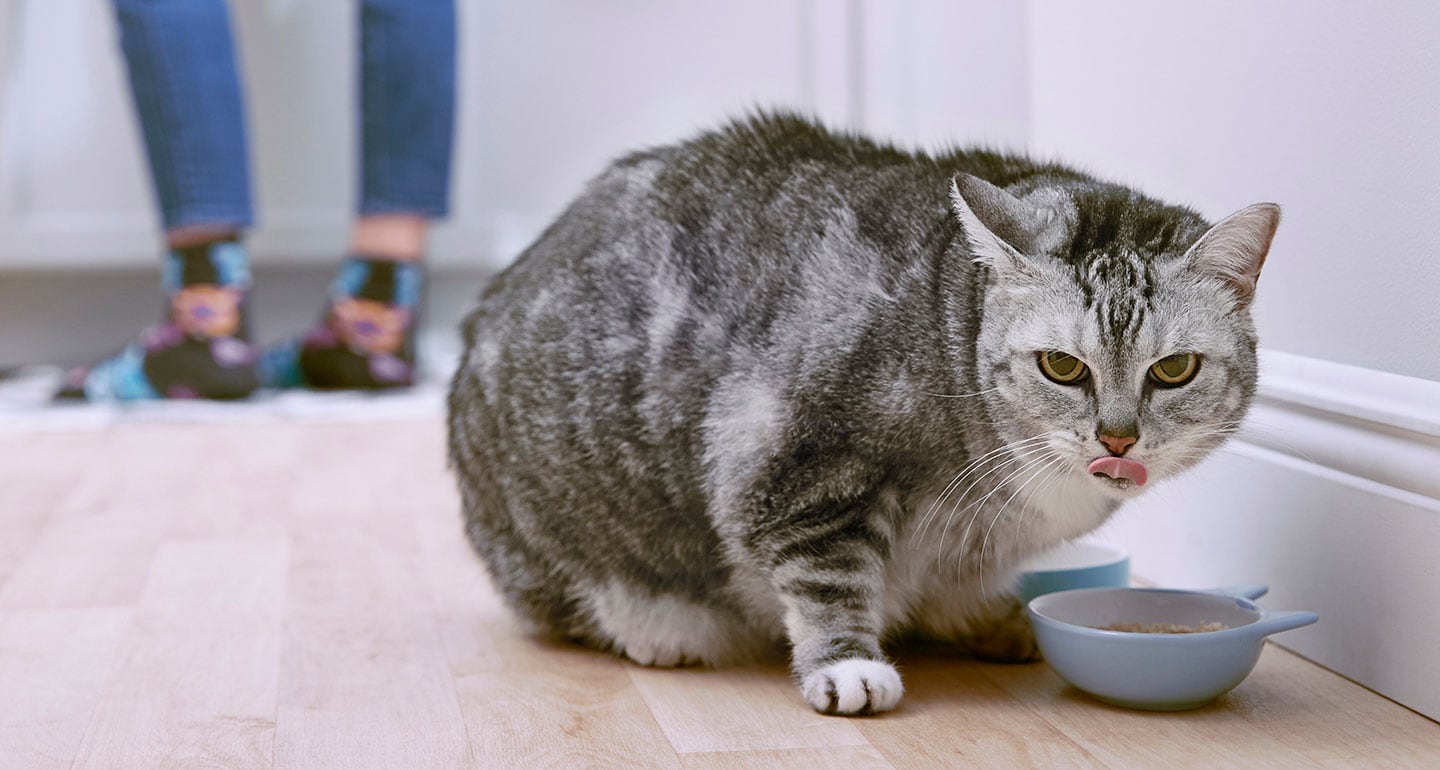
Photo: Chewy Studios
One of the most important things you can do to help your dog or cat retain their youthful energy is to keep them at a healthy weight.
“Overweight and obese animals do not age as well as thin and fit animals,” Dr. Wooten says.
That means paying attention to the type of food you feed your pet and how much you feed them.
If your pet is getting up there in age, Wooten recommends feeding a dog food labeled as “senior diet” as she says they are more digestible and contain different levels of nutrients, such as omega-3 fatty acids, that support heathy aging.
Just remember: Too much of a good thing can be harmful, so be sure not to overfeed your pet. Dr. Wooten recommends calculating your pet’s daily caloric requirement with their veterinarian, and only feeding them what they need.
“Most people overfeed their pets,” she says. “Definitely talk with your pet's healthcare team about how many calories your pet should be eating. They can calculate the daily caloric requirement, and help you calculate exactly how much food to feed of the particular diet you are feeding [your pet].”
Of course, it can be hard not to spoil your beloved pet with lots of treats and extra servings of food, especially when they give you those puppy dog eyes or rub up on your ankles. But the goal is to help your dog or cat live longer and feel younger longer. That is a much better reward than an extra biscuit, right?
How to Make Your Dog Live Longer
Everyone wishes their pet could live forever. If you're a pet parent wondering how to make your dog live longer or how to help your cat maintain optimum health, know that while aging is inevitable, you can help slow down the process by taking a proactive approach and adopting habits now that can make for a healthier future for your four-legged family members. Think about it this way: You wouldn’t wait until you were 70 years old to start eating healthy and exercising in order to live a longer life, so why wait when it comes to your pet?
More about caring for your pet:
Share:
